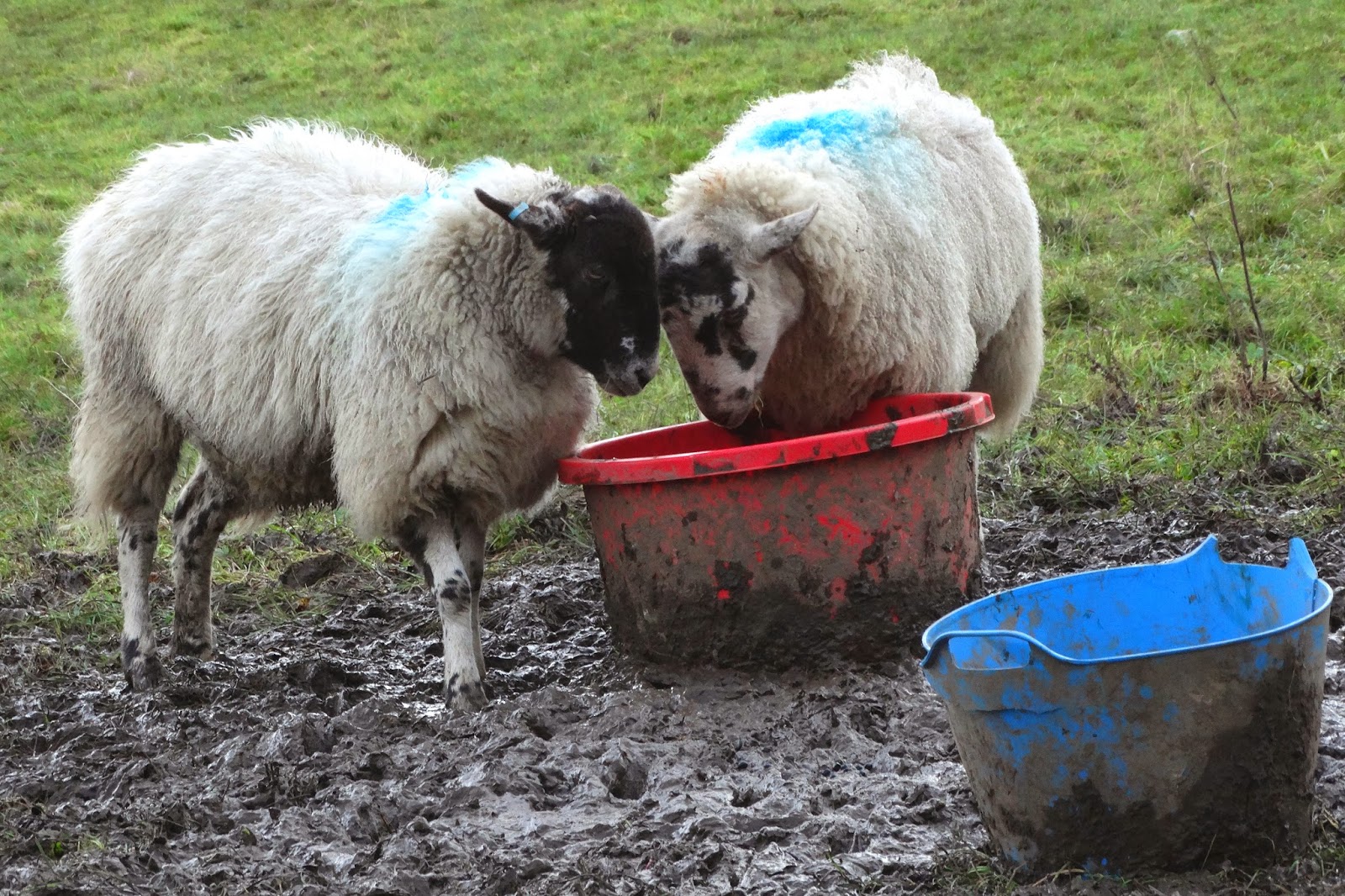A rather grey January afternoon. Whilst walking in the Mayfield Valley - just five minutes by car from our house - I stopped to take wintry photographs of some sheep by Old May House. I was partly attracted by the red and blue buckets - containing food supplements. Being an arty-farty kind of fellow, I thought those colours would add extra visual interest.
Sheep are not native to the British Isles. It is believed that they were first introduced about four thousand years ago by our neolithic ancestors. As centuries passed, ovine husbandry advanced and by the middle ages, British sheep were a source of enormous wealth. The woollen industry was largely responsible for the growth and national importance of several East Anglian towns - including Thetford, Kings Lynn, Norwich and Bury St Edmonds. Back then these places were far more significant than Manchester, Sheffield, Birmingham or Liverpool - towns that only really came to prominence in the late eighteenth century.
Below there's an exceedingly woolly sheep that I spotted above Hathersage a few days ago. She must have managed to dodge the shearers in the summer.
She belonged to this small flock, backlit by sunshine streaming into the Hope Valley through late December mistiness:-
As previously remarked, sheep are not native to these islands but neither are cows or goats - nor rabbits or chickens. And it's worth remembering that wheat, potatoes and all salad plants were also introduced at different times. It makes you wonder exactly what our distant ancestors ate. Fish, oats and other grasses, certain roots, berries, hunted animals such as wild boar and deer, birds, birds' eggs, native plants like nettles and comfrey. I'm not even sure that the latter are in fact native plants. It must have been such a challenge to put food on the table each day - especially in wintertime.







On behalf of Sylvia and Irene
ReplyDeleteI thank you for this post x
Please give them my regards and whisper "lamb chops" in their ears.
DeleteWhen visiting New Zealand, I discovered that the colored markings on the sheep meant that they either had twins (in which case they would live to birth twins again) or that they had needed some help from human hands in the birthing process (in which case they would soon be lamb chops). Any idea what the blue means on these ovines?
ReplyDeleteIf the colour is on her back it comes from the raddle harness all tups wear when they are let lose with ewes. It lets the shepherd determine which ram is more prolific. Come lambing time the ewes number is written on her issue. As far as I know there is no standard colour coding. Given what the EEC cost I feel a little let down.
DeleteI didn't realise you had visited NZ M.Thyme. Often ewes that have been impregnated will be accidentally marked by the ram that topped them but in this instance I rather think the blue spray simply marks ownership as the raddle harness would leave its dye much closer to the hindquarters.
DeleteYP, Though brought up in the northern Peak or it's namby pamby neighbour Bakewell. That sheep with the massive wool is something I can't understand. If you don't sheer sheep they shed wool naturally in early to mid-summer. It's a natural moulting process. It's why when you venture to the northern Mediterranean (bugger me I spelt Mediteranian without spill chucker)* One has difficulty separating the sheep from the goats. I don't I'm heducated. Goats have hairs and sheeps have wool.
ReplyDelete* I got more slaps in primary school for mis-spelling Adrian and Mediterranean than for anything else except falling down steps. Daft sods had tested our eyes and then dolled the specs out at random. My glasses didn't do steps. For a year I persevered at my mothers insistence then I lost them and anarchy was born at the tender age of nine.
Funny when I type "Adrian" it often ends up as "Adrain" ... A drain on my resources! You seem to know a lot about raddle harnesses. Did you ever wear one yourself? After all, Bakewell lasses are legendary!
DeleteThere is now scarcely a sheep to be seen in this area - I live between Bury St.Edmunds and Thetford. It is all pigs and poultry.
ReplyDeleteThe last picture is so beautiful!
ReplyDeleteThinking about all the problems our distant ancestors faced - not only when it came to providing food -, it is amazing that our species survived at all.